How to sow wildflower seeds
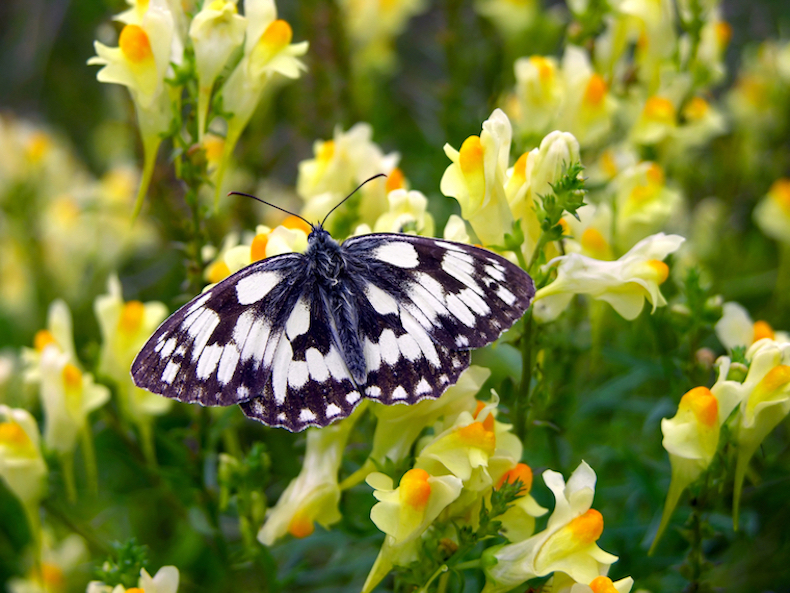
Attracting insects and animals, wildflowers are key in turning your garden into a little haven
Image: Marek Mierzejewski/Shutterstock
Wildflowers are important in supporting our native insects and animals. Not only do they encourage high biodiversity, they also make a pretty and colourful addition to the garden.
Wildflower meadows
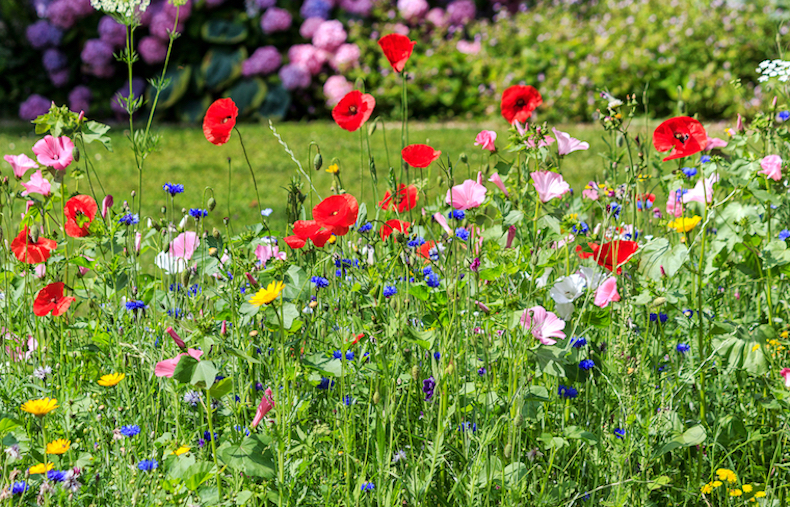
Enjoy a walk through your own private wildflower meadow this summer.
Image: Moskwa/Shutterstock
The most attractive way to grow wildflowers is by planting a meadow, although they can also be grouped formally in beds and borders to great effect. A quintessential part of the British countryside, wildflower meadows are an important part of our environment and an excellent, wildlife-friendly alternative to lawns and borders.
There are two types of meadow you can grow at home - annual meadows and perennial meadows. Both can easily be grown from mixed wildflower seeds or by using wildflower plug plants. Wildflower seeds are the most cost effective option, particularly for annual meadows or for planting up large areas.
Where to grow wildflowers
Annual wildflowers
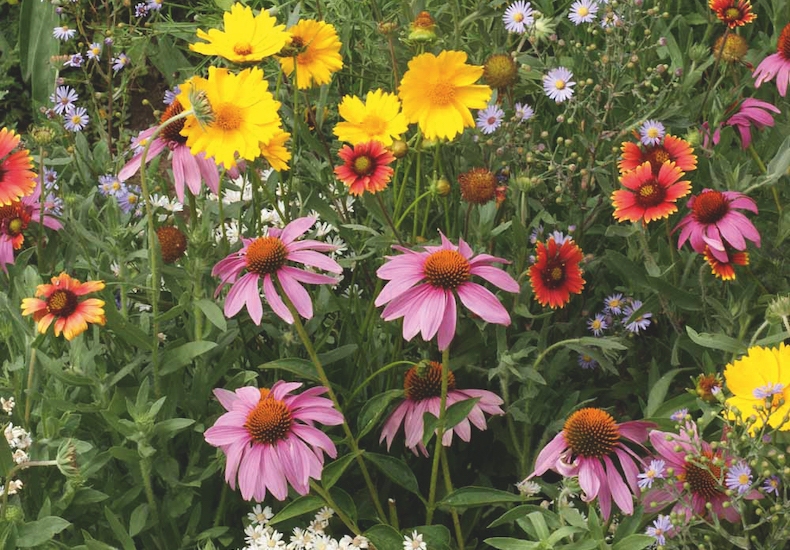
Amazing for creating a bright display, annual wildflowers fill your garden with colour.
Image: Honey Bee Flower Mixed from Thompson & Morgan
Annual wildflowers bloom in their first season, giving a bright show of colour from early summer before dying and setting seed in late summer or autumn. Annual wildflower seeds such as cornflowers, poppies and corn cockle look very effective scattered in beds and borders to create a colourful display.
Annual meadows such as those seen at the Olympic Park in London aren't strictly wildflower meadows. They are often a mixture of native and non-native wildflower seeds, such as Thompson & Morgan's Honey Bee Flower Mixed. This creates a very colourful display with big impact and, although it's not a true meadow, is still beneficial to pollinating insects. Unlike perennial meadows, annual wildflowers need rich fertile soil to give the best display.
Perennial wildflowers
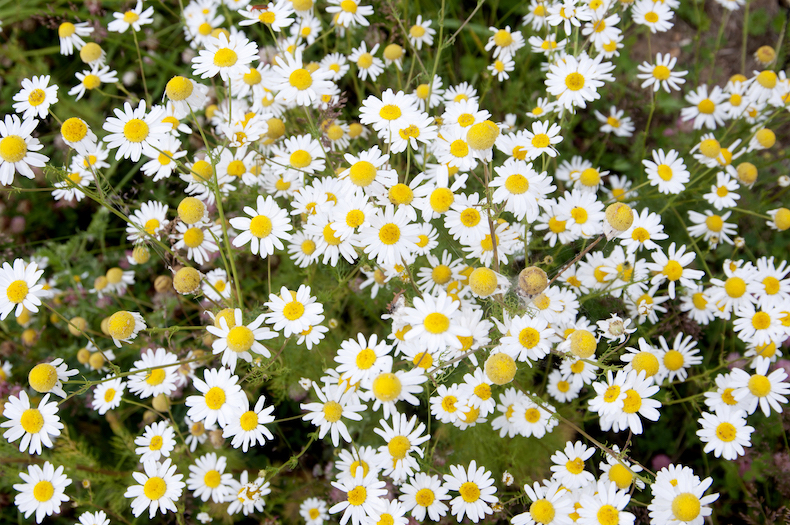
Ox-eyed daisies are quintessentially British
Image: Ox-Eye Daisy from Thompson & Morgan
Perennial meadows more truly represent those found naturally in the British countryside. Perennial wildflower seeds consist of grasses and flowers, and thrive best on poor soils where the grass won't outcompete the wild flowers. These meadows are most successful in large areas and take several years to establish properly and flower. Most perennial wildflower mixtures contain a high level of grass seed and are generally unsuitable for small garden use, often turning into a weedy-looking mess after a few years!
Perennial wildflowers such as ox-eye daisies, ragged robin and red campion can be found in open areas or woodland. Woodland wildflowers such as primroses, wood anemones and bluebells can be grown from seed or purchased as plants and are excellent for shady gardens.
How to sow wildflower seeds
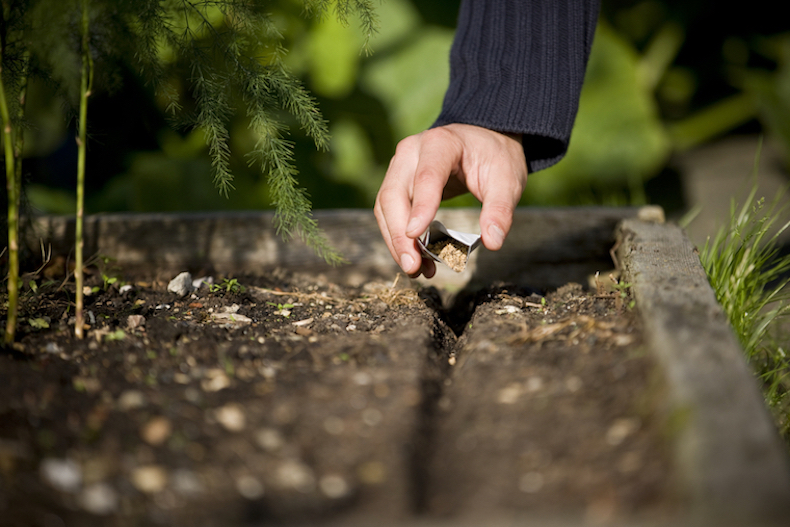
With plenty of sun, newly-sown wildflower seeds are sure to start germinating
Image: Air Images/Shutterstock
Sow wild flower garden seeds in March and April, or September if your soil is light and well drained. They prefer an open position in full sun. For annual displays, autumn sowing favours poppies and cornflowers, whereas spring sowing tends to favour corncockles and corn marigolds.
Prepare the ground by clearing away all existing plants and grass. It's particularly important to remove vigorous perennial weeds such as stinging nettles, docks and couch grass. In wildlife areas this is best done by hand. Where hand weeding is impractical, a systemic glyphosate-based weed killer may be used, although care should be taken to apply glyphosate on still, windless days. Avoid the use of glyphosate in areas that contain ponds and waterways.
Dig the soil over and firm it well before raking to create a level seed bed. Don't incorporate any fertilisers or manure as this encourages grass growth which crowds out the wild flowers.
It's best to allow up to 6 weeks for the soil to settle. This also allows any weed seeds to germinate, which can then be removed with a hoe or weed killer.
If your soil is very fertile and you'd like to grow a perennial wild flower meadow you can try stripping away the top 5-10cm (2-4") of soil to reduce fertility.
1 gram of pure wild flower garden seeds is enough for 1 square metre of soil. Mixed wild flower seeds with grass should be sown at 5g per square metre. Try mixing the seed with silver sand to help you see where you've been and make your distribution more even.
Rake the area lightly after sowing and cover with netting to protect from birds and cats. Ensure the soil is kept moist during hot, dry periods for the best germination.
Wildflower meadow maintenance
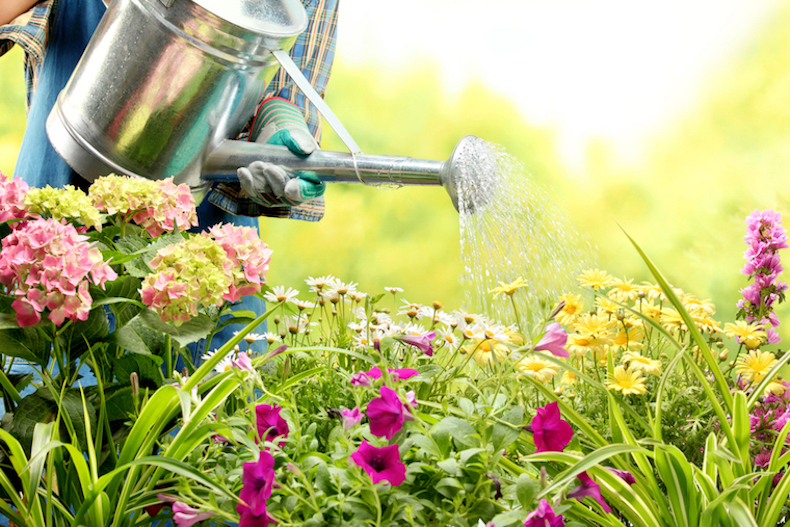
Make sure you water annual wildflowers until they get established
Image: SofiaWorld/Shutterstock
Annual wildflowers can be watered while they establish, to encourage good growth. Perennial wildflower meadows should be left to grow naturally without any additional water or fertiliser. Fertile soil favours grass growth which competes with the flowers.
Meadows will need cutting back or mowing each year. Traditionally they would have been maintained through grazing or hay-making. You can mow paths through wildflower meadows to allow access without trampling the plants. Make the path winding rather than straight for a more relaxed feel. This also encourages you to take your time walking along them!
Annuals
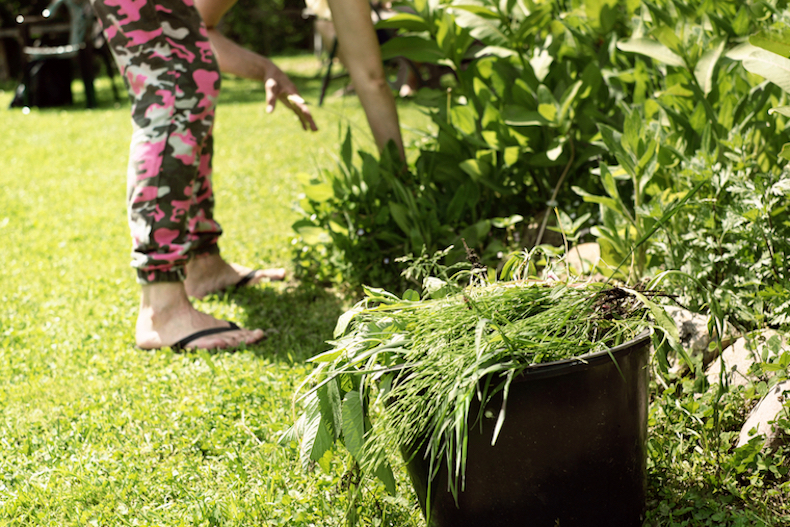
To get the best from the wildflowers, weed maintenance is key
Image: Victoras/Shutterstock
Annual wildflower meadows can be cut back in late summer or autumn, once flowering has finished and the plants begin to brown and die back. Cornfield annuals produce abundant seeds which can be left on the soil to grow for another display next year. They are plants of cultivated ground so the soil will need to be prepared each spring for the meadow to persist each year.
Plants can be left intact over winter to self seed or if preferred, simply shake the plants over the soil when cutting back in late summer.
In spring, clear away all weeds and any self-sown wild flower plants. This can be done by hand or with a systemic glyphosate-based weed killer.
Don't worry about removing wild flower seedlings as there will be lots of seed left in the soil for re-establishment.
Lightly break up the soil and rake over thoroughly to encourage seeds to germinate. If desired, more wildflower seed can be added at this point to correct an imbalance or bulk up the amount of plants.
Perennials
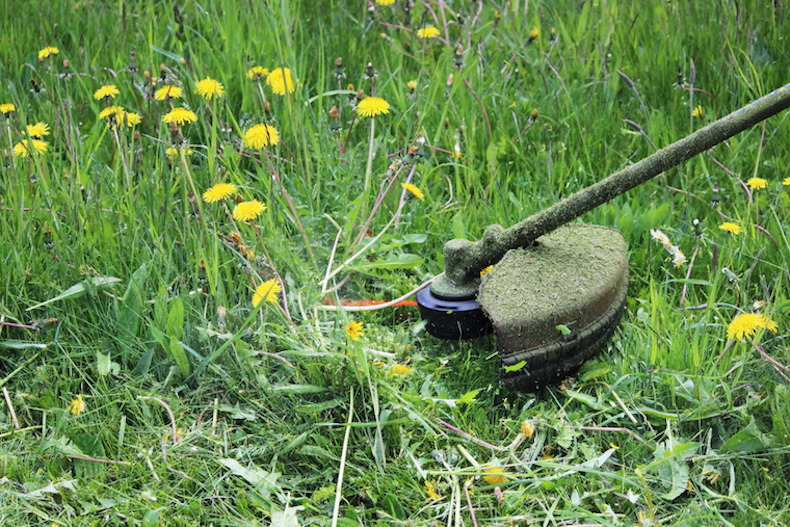
Mowing and strimming perennial flowers can encourage growth
Image: Wolfness72/Shutterstock
Perennial wildflower meadows need annual maintenance to encourage the more desirable plants to grow, and reduce the vigour of rampant plants. Most perennial wild flower seed mixtures contain summer-flowering plants but some mixtures may be designed for spring colour; including plants such as primroses, fritillary, cowslips, lady's smock, bugle and self-heal. Some mixtures may contain both spring and summer wild flowers and should be treated as a summer meadow.
Your lawn mower may struggle with cutting long grass, so for smaller areas use a strimmer or cut by hand with shears.
A new meadow should be mown quite regularly in its first year. Aim to make cuts every 8 weeks to a height of 5cm (2"). This encourages the young plants to form good root systems and controls any annual weeds which crop up.
Cut spring-flowering meadows in July and for the remainder of the summer, to control grass growth and allow the spring flowering plants to thrive. Aim to cut to 5-7.5cm (2-3") each time.
Cut summer-flowering meadows in August or September to give late wild flowers a chance to set seed. Make cuts to 5-7.5cm (2-3"). You can also cut summer-flowering meadows in early spring to control grass growth, although this will prevent any spring-flowering plants from blooming.
Leave the cuttings where they are for a few days to allow wildflower seeds to drop before collecting and composting the remains.
If there is strong re-growth in the autumn, make another cut in late autumn to weaken the grasses.
Try leaving some areas uncut around the edge to provide shelter for over-wintering insects.
Managing weeds and grass growth
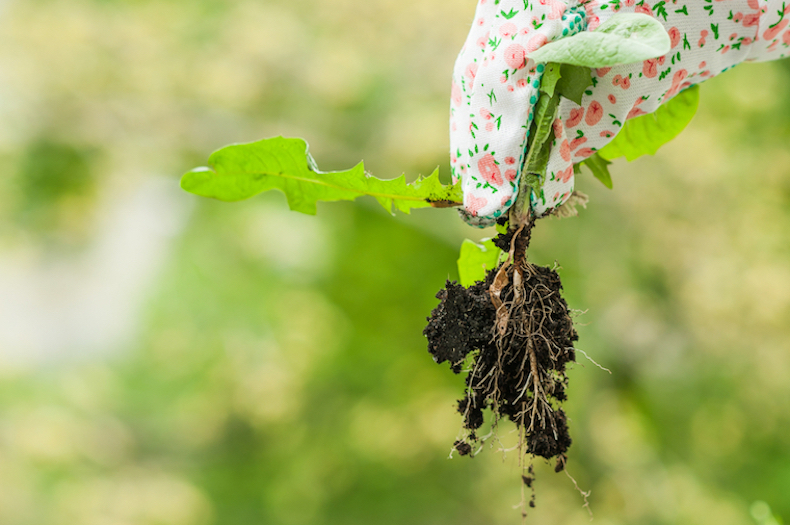
Keep on top of your weeds this summer
Image: Effective stock photos/Shutterstock
You may find weeds a problem, particularly in the early stages of growth. Some persistent weeds such as thistles and dock are best rooted out by hand or spot treated with a glyphosate-based weed killer. Perennial flower meadows can sometimes become dominated by grass. This should be controlled by mowing but you can also try introducing an annual wildflower called Yellow Rattle (Rhinanthus minor). This plant is semi-parasitic to grasses, weakening their growth, and these wildflower seeds are sown in early autumn.
For further tips on making your garden more wildlife friendly take a look at our article on 'How to encourage wildlife in your garden'. For a list of other wildlife-friendly plants take a look at our 'Plants for wildlife' guide.
Sign Up For Exclusive Special Offers




© 2024 Thompson & Morgan. All rights reserved. A division of Branded Garden Products Limited.



